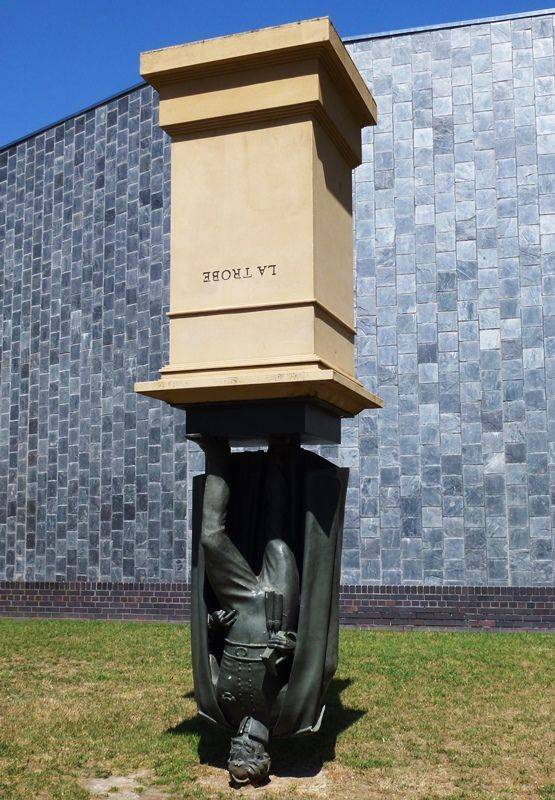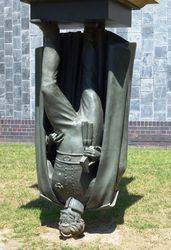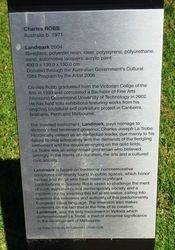
Charles Joseph La TrobePrint Page 
The statue commemorates Lieutenant Governor Charles Joseph La Trobe. Melbourne sculptor Charles Robb turned the statue on his head, and says it embodies the notion that universities should turn ideas on their heads.
Charles La Trobe was the first Lieutenant - Governor of Victoria. He held office from 1839 to 1854, helping to establish the Royal Botanic Gardens, State Library, Museum of Victoria, National Gallery of Victoria and University of Melbourne.
Location
| Address: | Science Drive, near Health Sciences Building, La Trobe University, Bundoora, 3083 |
|---|---|
| State: | VIC |
| Area: | AUS |
| GPS Coordinates: | Lat: -37.719548 Long: 145.045914 Note: GPS Coordinates are approximate. |
Details
| Monument Type: | Statue |
|---|---|
| Monument Theme: | People |
| Sub-Theme: | Government - Colonial |
| Artist: | Charles Robb |
Dedication
| Approx. Monument Dedication Date: | 2004 |
|---|
La Trobe
Charles Robb
Australia b. 1971
Landmark 2004
Fibreglass, polyester resin, steel, polystrene, polyurethane, sand, automotive lacquers, acrylic paint
490.0 * 130.00 * 130.0 cm
Donated through the Australian Government`s Cultural Gifts Program by the Artist 2006
Charles Robb graduated from the Victorian College of the Arts in 1993 and completed a Bachelor of Fine Arts (Honours) Queensland University of Technology in 2002. He has held solo exhibitions featuring works from his ongoing sculptural project in Canberra, Brisbane, Perth and Melbourne.
The inverted monument, Landmark, pays homage to Victoria`s first lieutenant-governor, Charles Joseph La Trobe. Historically viewed as an ineffectual leader, due mainly to his failure to deal adequately with the demands of the fledgling settlement and the issues emerging on the gold fields, La Trobe was an enlightened gentleman who believed strongly in the merits of education, the arts and a cultured civic society
Landmark is based on traditional commemorative sculptures commonly found in public spaces, which honor heroes and those who have made significant contribitions to society. Robb seeks to challenge the merit of such monumentns in a contemporary society and a modern city by inverting this full scale statue, calling into question the relevance and authority of this predominantly European visual language. The inversion also makes comment of the fact that at the time of its creation, Landmark, was the only monument in Victoria which commemorated La Trobe, a man of immense significance in the development of Melbourne.
La Trobe University Art Collection, LTU2011/06







